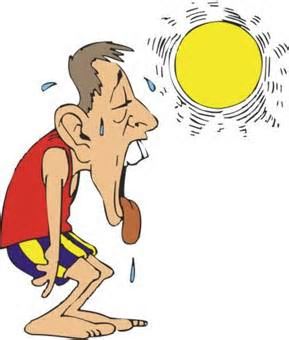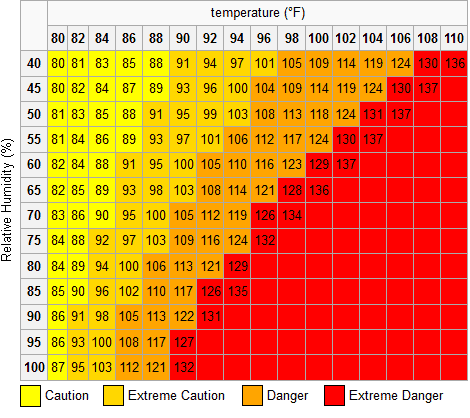 Are you prepared for the summer heat? Every year workers become sick on the job from exposure to heat and hot environments. From 2008-2013, OSHA reported 105 fatalities related to heat exposure on the job. The hotter the weather, the higher the risk to heat-related illnesses. These injuries can be avoided with some knowledge of what causes these injuries and what employers can do to help protect their employees from these injuries.
Are you prepared for the summer heat? Every year workers become sick on the job from exposure to heat and hot environments. From 2008-2013, OSHA reported 105 fatalities related to heat exposure on the job. The hotter the weather, the higher the risk to heat-related illnesses. These injuries can be avoided with some knowledge of what causes these injuries and what employers can do to help protect their employees from these injuries.
The key to preventing these injuries is to understand what heat illnesses are and what causes them. Heat is generated from two sources, (1) the environmental conditions in the work area, and (2) the internal heat generated by the body due to physical activity. When the body loses its ability to release this heat (sweating), the signs and symptoms of heat-related illnesses start to appear. This can be caused by the temperature, humidity, age, obesity, poor circulation, high blood pressure, medication and alcohol. Sweating results in the body losing salt and minerals, which need to be replaced to prevent the body from suffering from heat-related illnesses.
Heat-related illnesses include:
- Heat rash – your skin excessively sweats and gets irritated
- Heat cramps – muscle spasms and/or pains that occur during physical activity
- Heat exhaustion – sweating heavily, dizzy, skin pales, headache, nausea, your breathing increases, and you have a weak but fast pulse
- Heat stroke – very high body temperature (above 103 degrees F, orally), red, hot, dry skin, quick pulse, confusion, seizures and unconsciousness
Treatment of heat-related illnesses includes:
- Heat rash – Remove your body from the heat, move to a cooler, less humid area, keep the area dry and apply a dusting powder
- Heat cramps – stop work activity, get out of the heat and move to a cooler location, drink clear juice or a sports beverage, and rest until the cramps go away
- Heat exhaustion – stop work activity, get out of the heat and move to a cooler location, remove outer clothing, spray water mist on the skin, offer small amounts of water, then call or get the person medical attention
- Heat stroke – get the person to a shady area, call 911, cool the body with water and then fan the person until medical personnel arrive, DO NOT give fluids and turn the person on their side if they begin to vomit
Because the above illnesses are preventable, the following are some actions that can be taken when the temperature, humidity or hot work environment cannot be avoided:
- Drink plenty of fluids throughout the day (2-4 glasses of cool fluids each hour) – fluids include water and sports drinks – DO NOT drink alcohol, soda or drinks with caffeine
- Take plenty of rest breaks in the shade or air-conditioned area
- Wear sunscreen
- Gradually increase workloads to acclimate yourself to the heat
- Wear light, breathable clothing and a hat
- Know the signs the heat-related illnesses and stop working if they occur
- Watch co-workers for signs and symptoms of heat-related illnesses
- Work during the cooler parts of the day if possible
- Start work earlier and end earlier
- Develop a Heat Prevention Program for the workplace
The Heat Index
The heat index is the meteorological method of measuring how hot it feels by combining the use of the relative humidity and the actual air temperature. These levels can increase by as much as 15 degrees F when exposed to direct sunlight and strong winds. The following Heat Index Chart, published by the National Weather Service, shows the heat index using the humidity and temperature. This chart can be used by employers to develop their Heat Prevention Programs to protect their employees from heat-related illnesses.
Protect Your Family
These same procedures can be used to protect your family during the summer months and remember “never leave children, pets or disabled persons in a parked vehicle or an area with improper ventilation.

